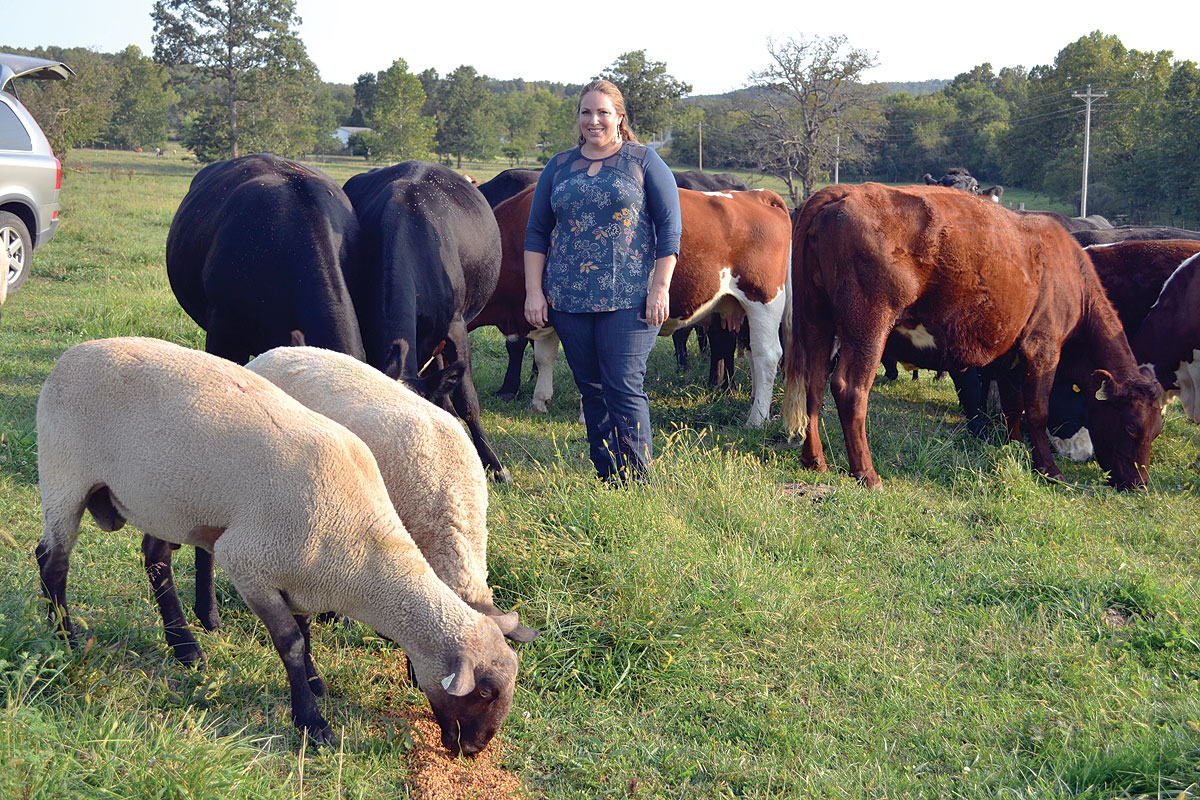 Semper Fidelis Ranch at the apex of Laclede, Dallas and Camden counties, actually lies in rural Camden County along the southern county line.
Semper Fidelis Ranch at the apex of Laclede, Dallas and Camden counties, actually lies in rural Camden County along the southern county line.
Named by the late Thomas Hempel, a World War II Marine who saw the Marines raise the famous flag on Iwo Jima, the ranch today is run by two of his sons, Matthew and Albert, with the support from their mother, Marguerite.
“We raised our 10 kids doing dairy farming in upstate New York for 25 years, but we were looking for somewhere a little warmer,” Marguerite recalled. “Not sure what we were thinking when we moved here right after a huge ice storm in January 1979, but my husband loved looking at farms and when he saw this one, he fell in love.”
A quick look at the 800 acres of pastures and woods nestled along the blue spring-fed Niangua River makes it clear how easily that could happen.
Albert, who was 11 years old when he moved with his family to the remote ranch that has been his home ever since, now farms more than 3,000 acres, as they also lease and work small acreages that belong to many of their neighbors.
“There are a lot of little farms in the area that will support five, 10, 15 head of cattle but people don’t want to work those anymore. It’s just not worth it so we work their small acreages and move our cows every few days, using intensive grazing,” Albert said. “It works out well for all of us. We do the ranching and the neighbors have someone caring for their land, watching over it. Three thousand acres sounds like a lot, but it’s really only about 10 percent pasture so that’s not a lot of grass. So much of this land is wooded but we keep the fences up. We use a lot of electric fences, connect them at times to barbed wire. The cows don’t know which ones are connected and when, so they respect them all and that makes our job a lot easier.
“When we came here, we started with a cow-calf ranch and then about 20 years ago, we moved to a stocker cattle operation. As that became less profitable, we went back to commercial cow-calf, which is what we do today with about 100 pairs.”
“My husband did everything the old-fashioned way but things have changed and my sons do things differently now,” Marguerite added.
“You have to change with the markets,” Albert admitted with a smile. “Today, we raise cattle, do some grass finishing, and do it with no GMOs and no antibiotics.”
The family also has incorporated pastured poultry into their family farm.
“We raise broilers, meat chickens, not in buildings in cages but in the pasture. We do 200 to 300 Cornish cross chickens at a time. It takes seven and a half weeks to raise them up to an average of 5 1/2 pounds, dressed weight.
“They spend three weeks in the brooder house and then are raised on a diet of 60 percent grain/40 percent pasture. We have small structures out there to protect them from the weather and predators. It’s based on Joel Salatin’s program and books. He’s considered the father of pastured poultry.”
The family has also incorporated a few other practices in their operation, which has improved their poultry production.
“Cornish crosses are known for leg problems, which doesn’t allow them to support their own weight, but we make our own feed and with exercise, we don’t have those problems,” Albert said.
Swine production is also a part of the diversified family farm.
“We buy a few feeder pigs each year at about 50 to 60 pounds, then raise them up to 260 to 280 pounds,” Albert said. “We used to do farrow to finish, but now we just raise the feeder pigs for specific customers.”
The brothers attended stockmanship school in years past, where they learned to handle cattle in a quiet way.
“No cowboy stuff,” Albert said. “The rotational grazing opens doors for us with our neighbors. Good fences and cooperative cows makes it all work.”







